#Composting Toilets
Explore tagged Tumblr posts
Text
The Deception of SDGs (prose)

I've been hearing the term Sustainable Development Goals a lot lately. As a word, sustainability and its opposing concept of development coexist in one word. On the TV show I watched yesterday, a consumer was featured who said, "I recycled coffee grounds." ...But this is a deception. They are just self-satisfied that they have done something environmentally friendly by recycling this kind of thing. These people are the ones who use flush toilets without any doubts. This is the problem.
Flush toilets are one of the worst things humans have ever invented. They contribute to environmental pollution without taking any responsibility for their own waste. In that sense, SDGs are a stone in the sand. Composting toilets are better than flush toilets. Disposing of feces and urine probably impacts the environment more than kitchen waste. A senior of mine from university, a sanitary engineer, used to work for the United Nations. Still, when it came to water treatment, he was doing work reminiscent of flush toilets. This won't do.
Rei Morishita
(2021.11.03)
SDGsの欺瞞(散文詩)
Sustainable Development Goals(持続可能な開発目標)という言葉で、最近よく聞くようになった。言葉としては持続可能ということと、それに相反する開発ということが、ひとつの言葉のなかに共存している。昨日見たTV場組では、「コーヒーの搾りカスをリサイクルしました」、とかいう消費者が取り上げられていた。・・・でも、これは欺瞞だ。この種のリサイクルをやって、なにか環境に優しいことをやったと、自己満足に浸っているに過ぎない。こういう人に限って、水洗トイレをなんの疑問も抱かず使っているだろう。ここが問題なのだ。
水洗トイレは、人間が発明したものの中で、最悪のものの一つだ。自分の出した排泄物に、なんの責任も負わずに、環境汚染の片棒を担ぐのだから。SDGsは、その意味で、ツマズキの石である。水洗トイレではなくコンポストトイレのほうがまだマシだ。厨房ゴミより糞尿の処理のほうが、環境に与える影響が大きいだろう。大学の先輩の衛生工学者は、国連で働いていたが、こと水処理では、水洗トイレをイメージした仕事をやっていた。これではダメだ。
#SDGs#prose#rei morishita#coffee grounds#recycle#deception#flush toilets#composting toilets#sanitary engineer#UN
3 notes
·
View notes
Text
What to Look for in an Off Grid Toilet System: Size, Features, and Setup
Living off the grid means reworking the basics. A reliable toilet isn’t just a comfort—it’s key to keeping everyday life practical and hygienic. Not all setups fit every space, so it’s important to understand what features matter.
The best off grid toilets balance size, smart design, and simple installation.

Size Isn’t Just a Matter of Fit
Space is often limited in off-grid living. Cabins, vans, boats, and tiny homes demand compact, efficient solutions. The footprint of your toilet matters—but so does its capacity.
Ask how often it needs to be emptied. Some setups hold several days’ worth of waste. Others require frequent attention. If you’re away from municipal systems, the fewer maintenance moments, the better.
Measure your space. Then match it to a toilet system that fits without compromise.
Features That Serve a Purpose
Not all features are created equal. With off grid toilets, look for the ones that simplify care and improve hygiene.
Urine-diverting systems are essential. By separating liquids from solids, they prevent odor and make composting cleaner and quicker. Many models use agitators to mix contents—an easy way to accelerate breakdown.
Ventilation fans, powered by battery or 12V, also help. They dry waste and manage smell without drawing much energy. A urine level sensor may seem minor, but it helps avoid overflows—especially when guests or family are involved.
Choose function over flash. The right features make a daily task far less tedious.
Installation Shouldn’t Be Complicated
The best systems don’t demand plumbing or professional help. Still, it’s smart to consider the install before committing.
Does the venting route make sense in your layout? Will the system work with your current power supply? Some units rely on USB or solar-compatible power for their fans. Others are entirely manual.
Also check how easily the toilet can be emptied and cleaned. Access points matter. Nobody wants to wrestle with waste in a tight corner.
Practical and Reliable Wins
Off grid toilets are no longer crude or complicated. Today’s systems are refined, user-friendly, and built for the realities of life outside the grid.
Pick a size that suits your living space. Focus on features that keep things clean and efficient. Make sure setup won’t turn into a project of its own.
The right toilet won’t just work—it will disappear into your routine. Quietly, effectively, and without fuss.
0 notes
Text
Composting Toilets: A Green Solution- Pros and Cons
Composting toilets are a great eco-friendly option for sustainable living. They offer a practical solution in areas with limited water resources while minimizing our environmental impact. Let’s explore the benefits and potential drawbacks of composting toilets. What Are Composting Toilets? Composting toilets are a waterless sanitation solution designed to turn human waste into nutrient-rich…

View On WordPress
0 notes
Text
Composting toilets come in many shapes and sizes. Without producing any bad odours, they can transform both liquid and solid waste into safe compost. Instead of breaking down human waste using chemicals, composting toilets utilise microbes found in the air, along with moisture and the nitrogen which naturally occurs in urine. Users rotate the unit in order to combine this mixture and prevent the build-up of nasty smells. excuse me while I look up alternatives to water based toilets bye
1 note
·
View note
Text
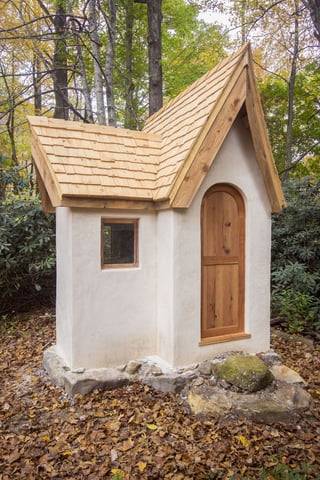
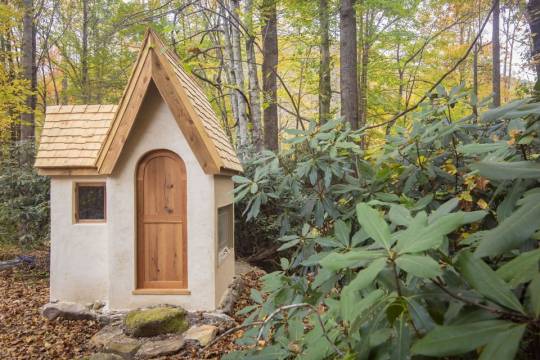
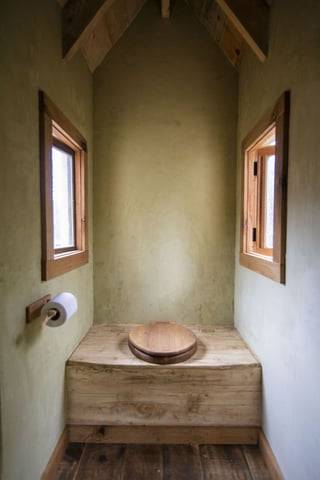

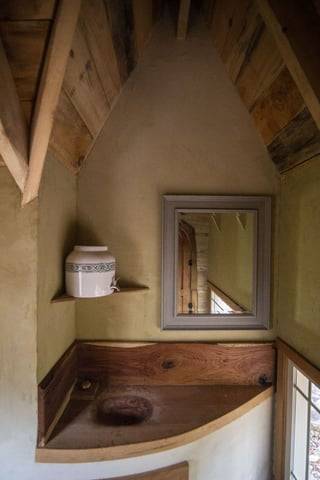
A composting toilet that a redditor and her husband built with lumber he milled. Lime plaster exterior and clay interior. North Carolina.
57 notes
·
View notes
Text

#i rlly fucking hate the compost upgrade#this toilet is the reason why i almost failed this challenge#berrimore:g2#sims 4 not so berry
12 notes
·
View notes
Text
Stumped On Christmas Gifts?
How About Helping Your Loved Ones Get Ahead of Panic Buying!
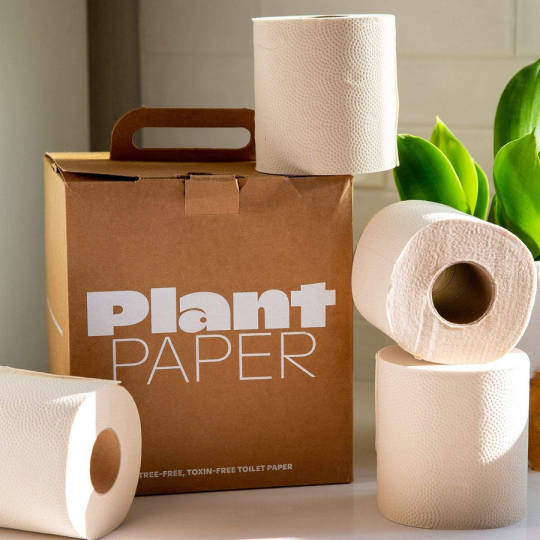






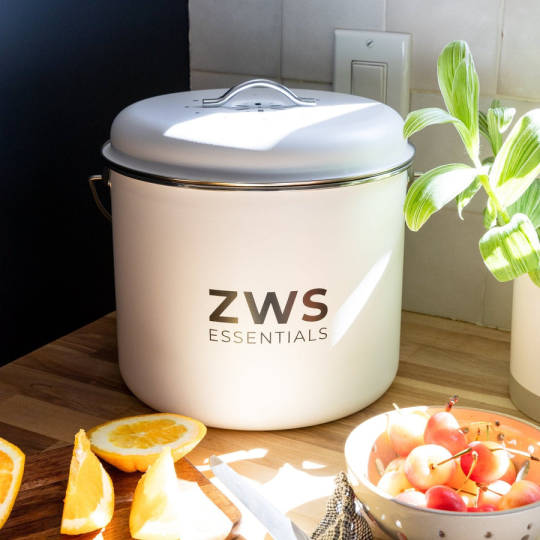
From toilet paper, to toothpaste, to soap, to hot chocolate, to even compost bins, get the gifts that are kind to people and the planet from Earth Hero, the eco-friendly Amazon! Or stock up for yourself before, you know, the tariffs screw us all over.
#christmas#gift ideas#unique gifts#xmas#tariffs#eco friendly#shopping#small business#environment#us politics#american politics#affiliate links#toilet paper#soap#food#composting#holiday#holidays#christmas gift ideas#christmas shopping#tea
3 notes
·
View notes
Photo

Composting toilets are gaining in popularity, especially among eco-conscious consumers. Similar to the process of composting food scraps, composting toilets transform human waste into compost-like material that can then be used as fertilizer (if local laws allow it) to enrich soil and support plant growth. Here's what you should know and consider before buying a composting toilet. How Do Composting Toilets Work? SolStock / Getty Images Composting toilets use a process known as aerobic decomposition—when organic materials decompose in the presence of oxygen—to break down human waste instead of flushing it down the sewer pipe. There are no chemicals or water involved. When you "flush" a composting toilet, a trapdoor opens and drops the waste into a chamber. Some composting toilet models have two chambers: one for solids and one for liquids. After using a composting toilet, you will need to add a carbon-rich material such as sawdust, peat moss, or coconut coir to the chamber. This will help reduce odor and create space for oxygen to get to the waste to break it down. Want more gardening tips? Sign up for our free gardening newsletter for our best growing tips, troubleshooting hacks, and more! Handling the Nitty-Gritty Details Here are a few specifics of how a composting toilet works with urine, feces, and more. Separating urine and feces: Urine and feces include many chemicals that react when combined, resulting in foul odors. Separating waste substantially reduces odors. That's why composting toilets have a solids bucket or chamber for feces and a urine diverter specifically for liquids. How long does it take for feces to decompose: Feces do not decompose inside the toilet's chamber. Feces decompose over months outside the toilet in a compost pile. What happens to diarrhea and vomit: Diarrhea and vomit contain more liquid but it will likely fall to the solids bucket or chamber. Simply clean the toilet out more frequently and keep the exhaust fan running. What happens to toilet paper: Toilet paper can be used in this type of toilet but it is slow to decompose. It's best to use marine or RV toilet paper which is made to decompose faster but it's also thinner and less comfortable. Some people forgo toilet paper and instead use reusable toilet paper made from washable fabric scraps (like the concept of cloth diapers). What stops the smell of urine and feces: Several things can stop the smell of waste and it depends on the model of the toilet. These methods include an exhaust fan system that runs frequently or continuously, a urine separator that contains the liquid, and/or a layer of sawdust (or other material) that traps smelly gases. Where to put urine and feces when cleaning a composting toilet: Most people put feces and urine in a composting pile. Or, the feces that collects in the bowl's bag or removable chamber can go into a heavy-duty trash bag and the urine into a "soaking pit" or a nearby gray water drain. Types of Composting Toilets pastie / Getty Images You'll generally find two types of composting toilets: split systems and self-contained systems. The one you choose will depend on the bathroom space and budget you're working with. Split System Sometimes called central systems, these composting toilets look similar to traditional toilets that hook up to a septic tank. They are split into two sections: a pedestal (above the floor) and a compost tank (below the floor) connected by a waste chute. Split systems usually have a larger capacity and are installed in high-traffic areas, making them great for homes, parks, or clubhouses. They are generally more expensive than self-contained composting toilets. Self-Contained System These all-in-one models have both the pedestal and the composting container in the same unit. Self-contained composting toilets are popular in tiny houses, cabins, RVs, motorhomes, boats, and single-level homes built on a concrete slab. What to Consider Before Purchasing a Composting Toilet If you're looking to be more sustainable at home, a composting toilet may be for you. But before you swap your traditional toilet for a composting toilet, consider these factors. The model you purchase will depend on your situation, needs, and budget. Capacity Composting toilets need to be emptied, and how often you have to do so will depend on its capacity. The larger the unit, the longer you can go between emptying. Regular emptying of your composting toilet is important to keep it clean and functioning properly. In general, if your composting toilet is used regularly at your residence, you will want to remove the compost at least once a month. If your composting toilet is used occasionally—such as on RV road trips—then the compost can be emptied once a season. Cleaning You can't use harsh chemicals to clean a composting toilet. Commercial toilet cleaners and cleaning wipes are designed to kill bacteria—including the good bacteria necessary for composting. Instead, use a homemade toilet cleaner containing vinegar or liquid citric acid, which will effectively clean without disrupting the composting environment. When choosing a composting toilet, consider how easy it will be to clean, as some are easier to wipe down and empty than others. Smell Odor is one of the top concerns people have with composting toilets. However, a properly maintained composting toilet should not smell. If it does, that indicates something is wrong. There are a few main reasons why a composting toilet may emit an odor: The solids chamber may be too wet; the urine diverter may not work correctly.There's too much humidity in the air and the chamber requires more covering material.The ventilation/exhaust fan stopped working.Harsh chemicals were used to clean the toilet but in the process killed composting bacteria.Toilet paper or wipes negatively affected the covering material in the chamber; put toilet paper in a separate disposal container to reduce odors. When used and cared for properly, a composting toilet will not smell. FAQ If the chamber of your composting toilet is lined with a biodegradable bag, simply remove and tie the bag with a knot. If the chamber is not lined, take it out and empty the contents directly into a compost pile. Composting toilets require more upkeep and maintenance than standard toilets to work properly. Poorly maintained composting toilet systems can lead to odors and health hazards. They also require you to manually remove the end product, rather than just being able to flush human waste down the drain. Yes, you have to empty a composting toilet when it gets full since it can't be flushed into the sewer or septic systems like traditional toilets. Source link
1 note
·
View note
Text
Committed an act of hubris by eating a load of cheese and pork right before staying somewhere with a composting toilet very close to the sleeping area.
#Technically a composting toilet can handle it#But I just feel like eating vegetarian food makes your life... more fragrant...
3 notes
·
View notes
Text
fuck it. bitching about my fic here and not on my tma blog. JON WHY CANT YOU BE THE SORT OF GUY WHO WOULD GLOSS OVER THE TOILET THING. COME ONNNN.
(context: leitner shrunk Jon and he is now tiny and will be living with Elias until things are fine. i can think of many solutions to the toilet problem but given elias is the sort who would suffer much before being a Bad Host, i really doubt elias would suggest any of them. agonies.)
#my friend suggested litter tray 💀#another friend suggested compost toilet as in he uses elias's houseplants. which is. i suppose a step up from litter tray
2 notes
·
View notes
Text
“It's hard to live in the city” ordinance (February 10, 2003)

The Snow Country (Yasunari Kawabata)
(This is an entry for a contest sponsored by Snowy Village. I won a prize and received 5 kg of top-grade rice.)
(the purpose)
Article 1
The purpose of this practice is to awaken the urban population, who live separately from rural areas to the place of humans in nature.
(Promotion of rainwater storage)
Article 2
The rain in the city just flows away, and the city people do not use it. Regardless of the form, local governments subsidize urban residents to use rainwater as their 'own water source'. This will prevent the destruction of nature caused by the constructing of unnecessary dams.
(Promote recycling of manure)
Article 3
Because excrement from the buttocks and agricultural products that enter the mouth connects cities and rural areas, local governments are working to spread composting toilets that can efficiently recycle excrement instead of flush toilets. Subsidies will be provided to households that have adopted composting toilets. At the same time, we will develop a route to effectively reuse the compost produced.
(Promotion of participation in forest management)
Article 4
As is well known, Japan's forestry industry is on the verge of collapse. We need to draw more attention to domestic timber. Therefore, each season, urban municipalities jointly plan forestry-related events with rural villages and invite urban residents to participate. Participating city residents and local governments will split the costs. The timber will be transferred at a low price to participating city residents.
(Care for wild plants and edible wild plants)
Article 5
In order to improve the fact that the citizens of the city have not returned anything to the farming, mountain, and fishing villages, those who steal wild plants will be penalized according to this customary practice. (Detailed regulations) Those who enter the mountain to pick edible wild plants are asked to buy thank-you fertilizer for a fee and use it to care for the collected edible wild plants.
(Provisions regarding tobacco)
Article 6
Currently, only the bad aspects of tobacco are emphasized, and urban residents are unaware of the fact that tobacco can also be used for medicinal purposes, including as a hemostatic agent. Violation of manners is out of the question, and clauses that discriminate against smokers are not included. It is a “do nothing” clause. (In fact, the causal relationship between tobacco and cancer has not yet been proven.) In addition, without violating the law, research and development of products using herbs (such as Eyebright, Coltsfoot, etc.) that can be used as "medicinal tobacco" are encouraged. and farming and mountain villages.
(Finance)
Article 7
In principle, each business is self-supporting, but businesses with poor performance can be financed without interest from other businesses.
#“It's hard to live in the city” ordinance#rei morishita#urban population#rainwater#dam#composting toilets#forestry industry#thank-you fertilizer#Eyebright#medicinal tobacco
5 notes
·
View notes
Text

New outhouse we built out of entirely reused materials.
17 notes
·
View notes
Text
best composting toilets
Searching for the best composting toilets on the market? The Thinktank toilet stands out with zero odor, strong airflow, and easy maintenance. Perfect for off-grid living, cabins, or mobile setups. Visit Composting Toilets USA to find out why this model is getting top reviews.

0 notes
Text

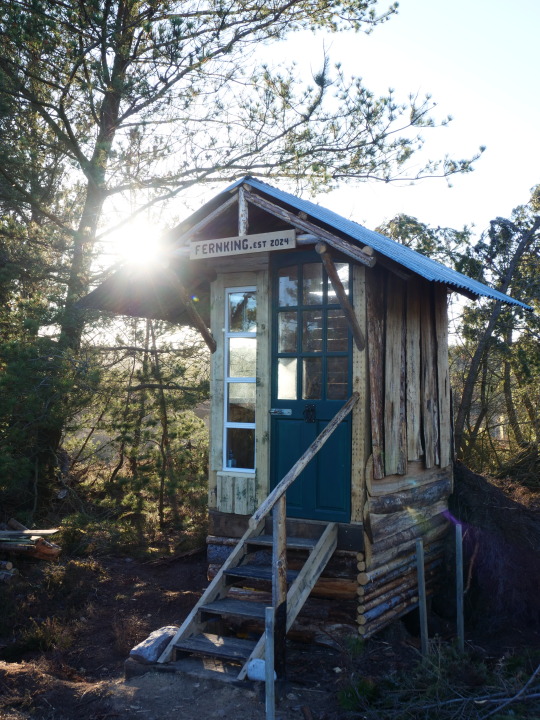


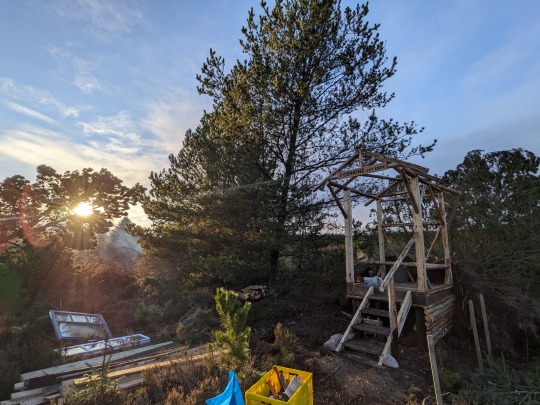
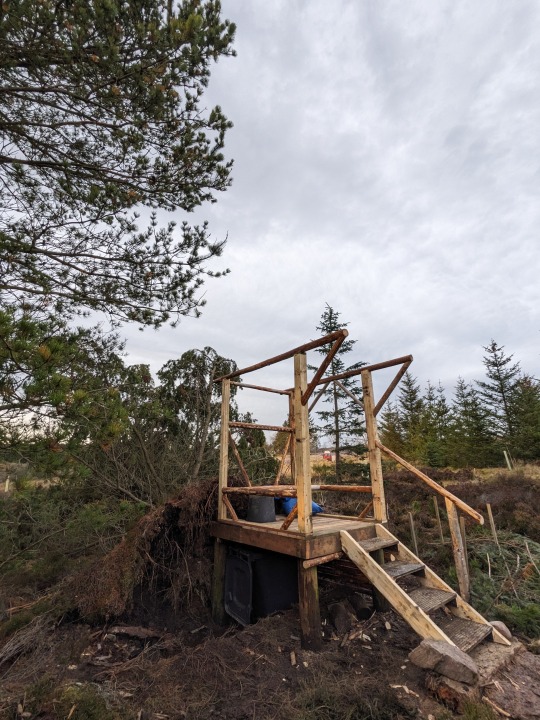

The first priority for obvious reasons was to build a compost toilet. Built out of round wood found on the land and reclaimed timber from various sources. The only cost was for nails, screws and the second hand windows, about £40 in all. The roof tin and some of the cladding was donated by the neighbour.
Situated on a knoll surrounded by Scots pines, it's almost like a bird hide.
0 notes
Text
Compost Toilet: How Does It Work and Why It’s a Sustainable Solution
Imagine a toilet that turns waste into compost instead of flushing it away – a solution for drought-prone, off-grid, and eco-friendly homes. If you’ve ever wondered “what is compost toilet and how does it work,” you’re in the right place. Compost toilets use aerobic decomposition (microbes with oxygen) to break down human waste, rather than flushing it into sewers or a septic tank. In simple…
#compost toilet#Eco-friendly#natural waste management#sustainability#sustainable living#sustainable sanitation
0 notes
Photo

Composting toilets are gaining in popularity, especially among eco-conscious consumers. Similar to the process of composting food scraps, composting toilets transform human waste into compost-like material that can then be used as fertilizer (if local laws allow it) to enrich soil and support plant growth. Here's what you should know and consider before buying a composting toilet. How Do Composting Toilets Work? SolStock / Getty Images Composting toilets use a process known as aerobic decomposition—when organic materials decompose in the presence of oxygen—to break down human waste instead of flushing it down the sewer pipe. There are no chemicals or water involved. When you "flush" a composting toilet, a trapdoor opens and drops the waste into a chamber. Some composting toilet models have two chambers: one for solids and one for liquids. After using a composting toilet, you will need to add a carbon-rich material such as sawdust, peat moss, or coconut coir to the chamber. This will help reduce odor and create space for oxygen to get to the waste to break it down. Want more gardening tips? Sign up for our free gardening newsletter for our best growing tips, troubleshooting hacks, and more! Handling the Nitty-Gritty Details Here are a few specifics of how a composting toilet works with urine, feces, and more. Separating urine and feces: Urine and feces include many chemicals that react when combined, resulting in foul odors. Separating waste substantially reduces odors. That's why composting toilets have a solids bucket or chamber for feces and a urine diverter specifically for liquids. How long does it take for feces to decompose: Feces do not decompose inside the toilet's chamber. Feces decompose over months outside the toilet in a compost pile. What happens to diarrhea and vomit: Diarrhea and vomit contain more liquid but it will likely fall to the solids bucket or chamber. Simply clean the toilet out more frequently and keep the exhaust fan running. What happens to toilet paper: Toilet paper can be used in this type of toilet but it is slow to decompose. It's best to use marine or RV toilet paper which is made to decompose faster but it's also thinner and less comfortable. Some people forgo toilet paper and instead use reusable toilet paper made from washable fabric scraps (like the concept of cloth diapers). What stops the smell of urine and feces: Several things can stop the smell of waste and it depends on the model of the toilet. These methods include an exhaust fan system that runs frequently or continuously, a urine separator that contains the liquid, and/or a layer of sawdust (or other material) that traps smelly gases. Where to put urine and feces when cleaning a composting toilet: Most people put feces and urine in a composting pile. Or, the feces that collects in the bowl's bag or removable chamber can go into a heavy-duty trash bag and the urine into a "soaking pit" or a nearby gray water drain. Types of Composting Toilets pastie / Getty Images You'll generally find two types of composting toilets: split systems and self-contained systems. The one you choose will depend on the bathroom space and budget you're working with. Split System Sometimes called central systems, these composting toilets look similar to traditional toilets that hook up to a septic tank. They are split into two sections: a pedestal (above the floor) and a compost tank (below the floor) connected by a waste chute. Split systems usually have a larger capacity and are installed in high-traffic areas, making them great for homes, parks, or clubhouses. They are generally more expensive than self-contained composting toilets. Self-Contained System These all-in-one models have both the pedestal and the composting container in the same unit. Self-contained composting toilets are popular in tiny houses, cabins, RVs, motorhomes, boats, and single-level homes built on a concrete slab. What to Consider Before Purchasing a Composting Toilet If you're looking to be more sustainable at home, a composting toilet may be for you. But before you swap your traditional toilet for a composting toilet, consider these factors. The model you purchase will depend on your situation, needs, and budget. Capacity Composting toilets need to be emptied, and how often you have to do so will depend on its capacity. The larger the unit, the longer you can go between emptying. Regular emptying of your composting toilet is important to keep it clean and functioning properly. In general, if your composting toilet is used regularly at your residence, you will want to remove the compost at least once a month. If your composting toilet is used occasionally—such as on RV road trips—then the compost can be emptied once a season. Cleaning You can't use harsh chemicals to clean a composting toilet. Commercial toilet cleaners and cleaning wipes are designed to kill bacteria—including the good bacteria necessary for composting. Instead, use a homemade toilet cleaner containing vinegar or liquid citric acid, which will effectively clean without disrupting the composting environment. When choosing a composting toilet, consider how easy it will be to clean, as some are easier to wipe down and empty than others. Smell Odor is one of the top concerns people have with composting toilets. However, a properly maintained composting toilet should not smell. If it does, that indicates something is wrong. There are a few main reasons why a composting toilet may emit an odor: The solids chamber may be too wet; the urine diverter may not work correctly.There's too much humidity in the air and the chamber requires more covering material.The ventilation/exhaust fan stopped working.Harsh chemicals were used to clean the toilet but in the process killed composting bacteria.Toilet paper or wipes negatively affected the covering material in the chamber; put toilet paper in a separate disposal container to reduce odors. When used and cared for properly, a composting toilet will not smell. FAQ If the chamber of your composting toilet is lined with a biodegradable bag, simply remove and tie the bag with a knot. If the chamber is not lined, take it out and empty the contents directly into a compost pile. Composting toilets require more upkeep and maintenance than standard toilets to work properly. Poorly maintained composting toilet systems can lead to odors and health hazards. They also require you to manually remove the end product, rather than just being able to flush human waste down the drain. Yes, you have to empty a composting toilet when it gets full since it can't be flushed into the sewer or septic systems like traditional toilets. Source link
0 notes